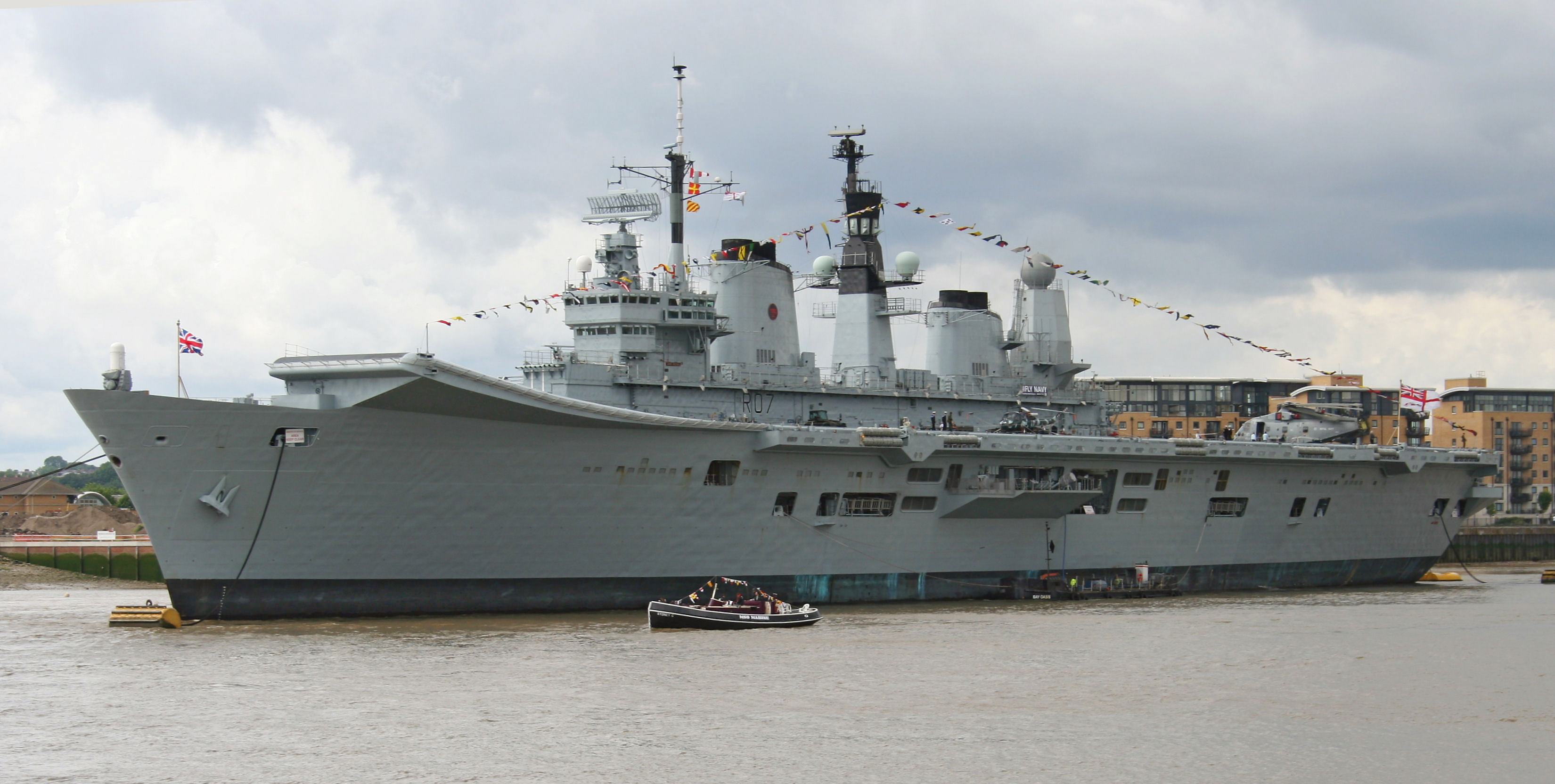 |
Navigating the ThamesPeter Chapman-Andrews |
 |
|
| The HMS ARK ROYAL docked in Portsmouth (2007) | |
| By Ian Visits at English Wikipedia, CC BY 3.0 |
In 1987 HMS ARK ROYAL became the first aircraft carrier and the largest ship at the time to transit the Thames Tidal Barrier. The barrier is formed of seven piers across the width of the river in Woolwich Reach, and between each pair of piers is a gate that can be raised when water levels threaten to flood London. We needed to pass through the barrier so as to berth off Greenwich.
ARK ROYAL’s length was a little under 690 feet, and her beam almost 120 feet. Piloting a large ship in a river is different from open water because there is generally a current that runs either with you or against you. We were aiming to arrive at our berth off Greenwich at High Water to take advantage of the maximum depth of water and the slack tidal stream that made it easier to secure to the buoys. Consequently, throughout our passage up the Thames the flood stream was running with us. As I recall, our speed in the river was 10 knots until just before the barrier when we slowed to 8 knots.
Great care was needed in negotiating the river bends to keep the ship in the channel, because being a long ship the current at the bow flowed in a slightly different direction from that at the stern. As a result, there was a tendency for the ship to ‘oversteer’ in rounding the bend as the stream tended to push the stern out, which had to be corrected quickly before the bows could enter the shallower, slower water on the inside of the bend. Furthermore, because the ship was travelling in the same direction as the stream the flow over the rudders was reduced thereby lessening their effectiveness. For these reasons the rudder angle needed to be frequently adjusted when rounding the river bends.
Our berth was off Greenwich between head and stern buoys with the bows facing down river, which meant we had to turn round and make a tug-assisted stern-board to the berth since the river wasn’t wide enough to turn near the berth itself. The tugs were secured just before reaching the barrier in Woolwich Reach, because immediately after the barrier was Blackwall Point, where the river bends almost 180 degrees, and where it would have been riskier. Consequently, the tugs were already attached as we passed through the barrier, although it was not intended to use them until after Blackwall Point. There were two tugs forrard – one through each bow fairlead – and one aft.
At the barrier the width of the main channels between the piers is 200 feet. Hence, with the ship in the centre of the gap there would be 40 feet to the piers on each side. Simple enough – on paper! It was calculated that the limiting crosswind component was 12 knots, above which the amount the ship would need to steer upwind to counter the drift would be too much for it to fit in the gap between the piers; in practice, however, the tugs would have been able to assist if necessary, no doubt.
Another complicating factor was that ARK ROYAL’s compass platform, or bridge, was offset to Starboard, as in all aircraft carriers. Thus, while from the Starboard bridge wing one could see along the whole of the ship’s Starboard side at the waterline, the view to Port was obstructed by the flight deck which created a ‘shadow’ area that prevented objects in the water from being seen out to 100 to 150 yards. Moreover, judging the positioning of the ship as we approached the barrier was made more difficult by not being on the centreline. For this reason, a second river pilot had been embarked who was positioned on the centreline in the eyes of the ship, and in radio contact with the primary pilot on the bridge. Rather than embarking them in the Thames estuary as normal, these two pilots had joined us in Portsmouth the previous day so that we could thoroughly brief each other on the plan during the passage up the English Channel.
Unsurprisingly, the best way to ensure we would negotiate the barrier safely was what concentrated our minds the most. Ultimately, knowing the gap to the Starboard pier should be 40 feet when in the centre of the channel, it was decided to drive the ship as close as we dared to the Starboard side pier, and providing we passed no more than 40 feet off, we knew we were missing the pier to Port by at least 40 feet even though we could not see it properly.
Once the barrier had been negotiated, and having rounded Blackwall Point, we put the ship’s nose into the entrance to West India Dock where it was held by the two forrard tugs, while the after tug, aided by the flood stream, took the stern round until the ship was pointing the other way. We then made our way astern, aided by the tugs, for about 1.5 miles to our berth.
The overall plan worked very well, but there was one heart-stopping moment when about a ship’s length from the barrier the Starboard bow tug inadvertently allowed its hawser to tauten, thus pulling the bows very slightly to Starboard – not what’s needed when trying to get close to but not actually collide with the pier on that side! The situation was quickly recovered, and the remainder of the evolution was duly completed without further drama.
